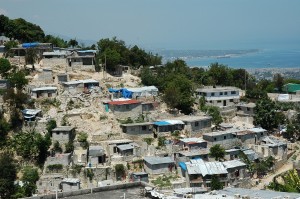A recent report (read it here) on the shelter situation in Haiti by Ian Davis of Lund University points out a troubling aspect of post-disaster reconstruction. Following the earthquake of 2010, more than 100,000 temporary shelters have been erected. These lightweight timber structures, called T-Shelters, are intended to be a transitional solution between tents, which are the usual emergency post-disaster shelter, and permanent houses. The problem, as Davis points out, is that the average cost of a T-Shelter ($13.80/square foot) is not much less than the average cost of a permanent house ($16.60/square foot). He suggests that the $500 million spent on T-shelters could have been better spent building permanent homes, especially as experience shows that “temporary” shelters tend to last a long time, becoming what he calls a “dismal legacy.” This is a problem as T-Shelters often occupy sites that are suited to permanent construction. Since the conventional building technology inHaiti is not timber (there are few trees) but reinforced concrete frames with cement block infill, the materials of the T-shelters are not easily transformed into permanent housing. Moreover, the imported technology is poorly suited to create the sort of skill-training that might generate future employment. Good intentions, not so good results.

